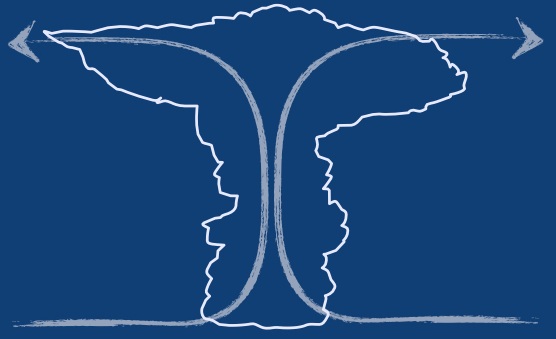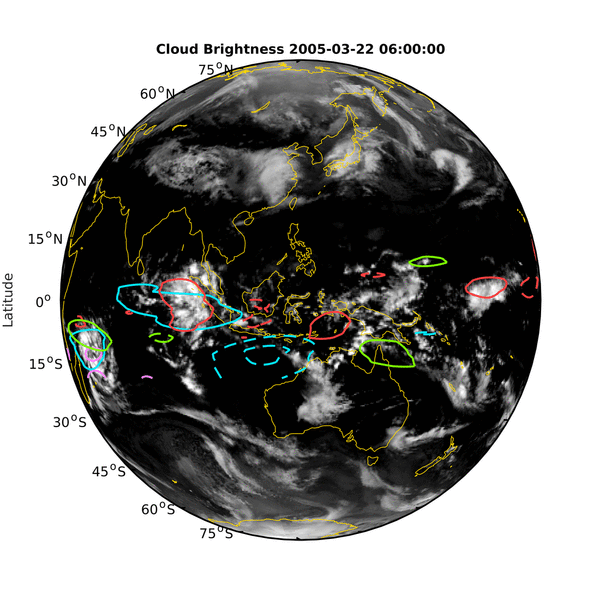Tropical Meteorology
Animation of CLAUS cloud brightness with the propagation of equatorial waves included as contoured. Red contours are Kelvin waves, the blue is MJO, and green are equatorial Rossby waves. The pink contour corresponds to slow Kelvin waves in the MJO envelope. Solid contours indicate convective enhancement while dashed represents convectively suppressed conditions.
Why should we study the tropics? If you look at the satellite image on the right (and infrared image from a geostationary satellite), you can see that the tropics cover a very large area of the globe. This also happens to be the region that gets the biggest amount of annual insolation. Other regions of the globe receive far less solar energy and instead receive some of that energy from the tropics. That is, the tropics donate some of that energy to the higher latitudes. If it weren't for the tropics, the mid and polar latitudes would be colder. Thus, tropical latitudes play a huge role in maintaining the Earth's climate.
But that's not the only interesting thing about the tropical latitudes. If you inspect the satellite image again, you would notice that tropical clouds are organized in a different way than the midlatitudes. Actually, it is not clear from that picture if the tropics are organized at all! But they really are! The contours in the animation show different wave types in the tropics. Notice how well they correspond with rainfall. On a day to day basis there are all sorts of waves and other disturbances like tropical cyclones that are helping to shape up the image that you see. There is much ongoing research to try to answer these two questions: (1) How do the tropics shape the planet's climate? and (2) How are weather patterns around the tropics are organized?
Areas of research in tropical meteorology:
Tropical Atmospheric Dynamics
Tropical Thermodynamics
Climate Change
Tropical waves
The Madden-Julian Oscillation (MJO)
El Niño-Southern Oscillation (ENSO)
Each topic can be accessed through links above. My research in these topics includes development of novel mathematical and statistical techniques, analyzing model simulations, and development of theoretical models that can capture some crucial elements of the tropical atmosphere.


